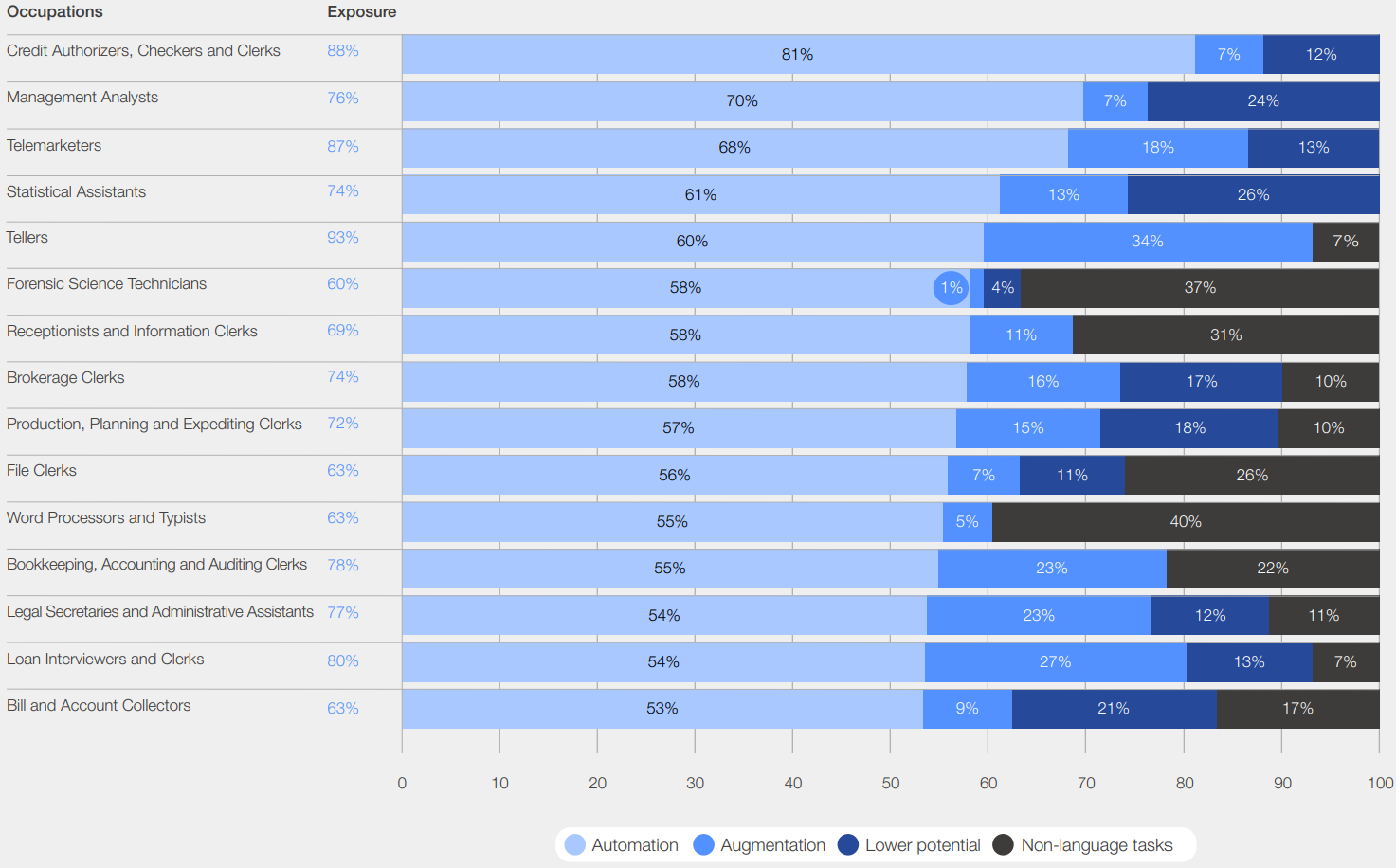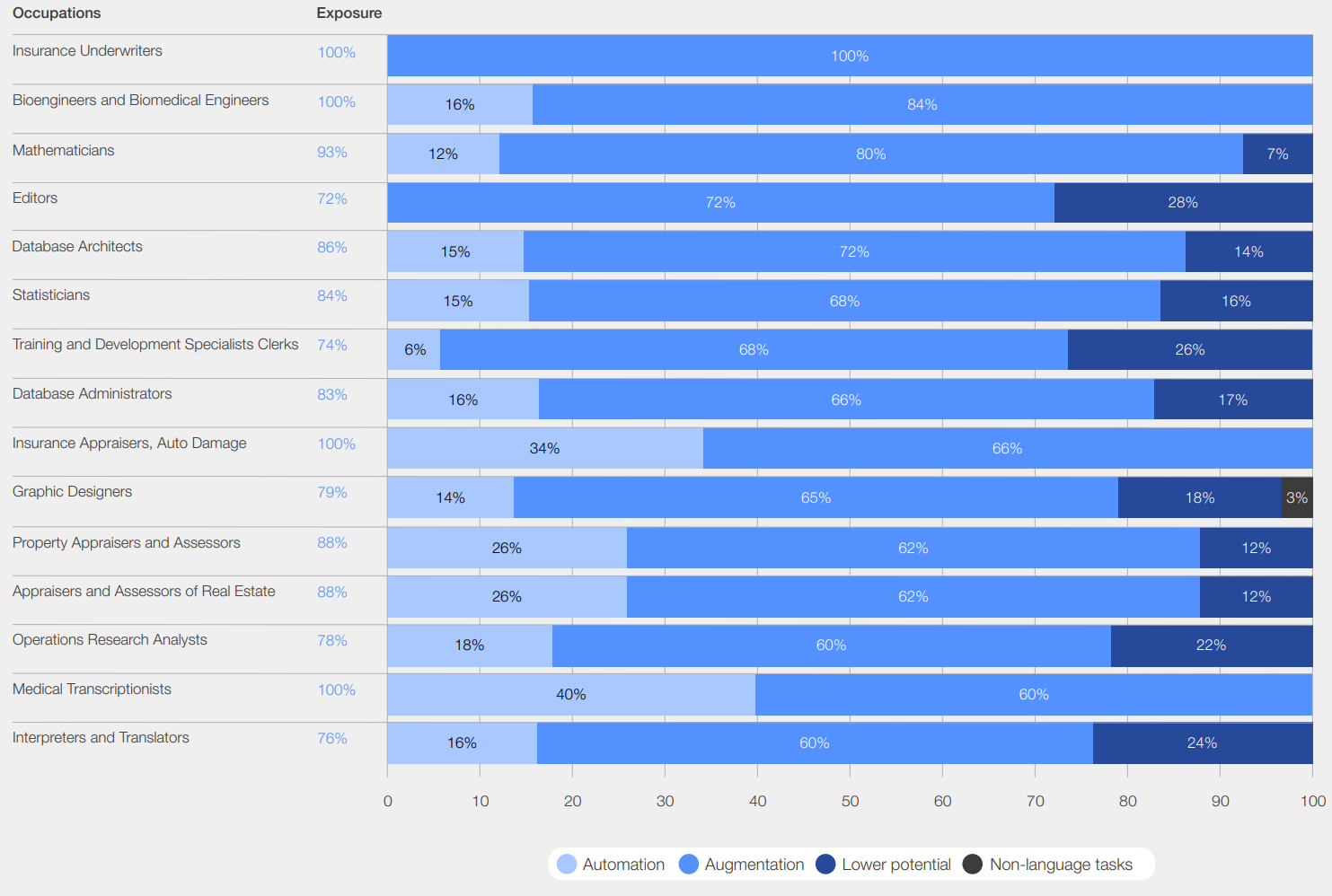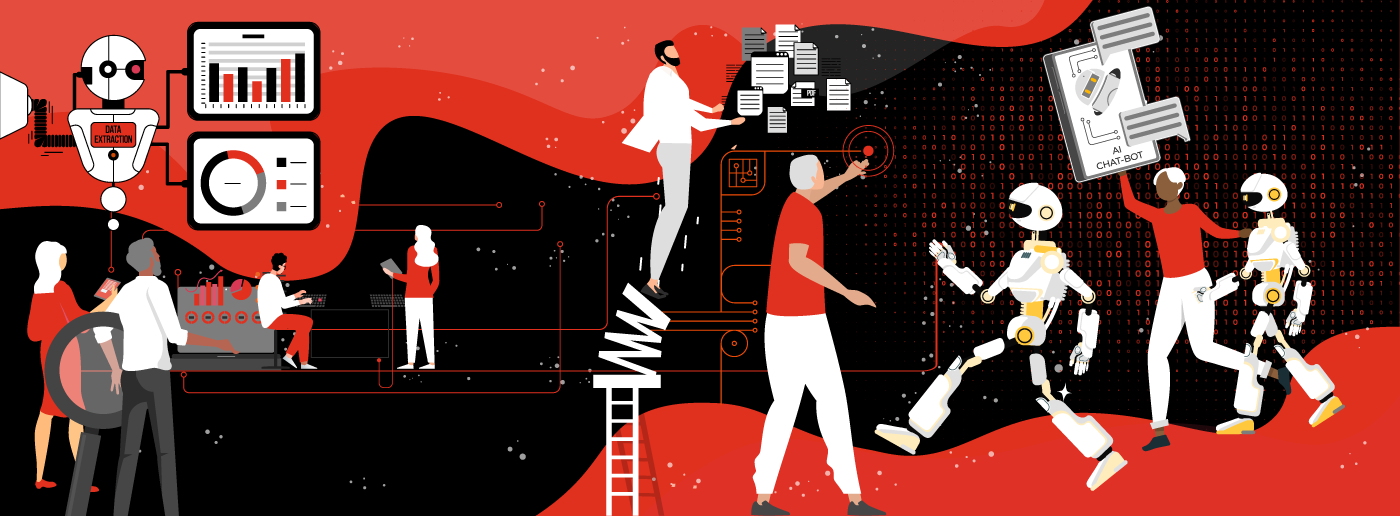It was only a few years ago—more precisely, in July 2021—that we published a blog about the jobs of the future for 2030 and beyond. They say time flies, but we would add that time flies at the speed of light. Technology seems to advance at a similar pace, making it hard to grasp as it continuously transforms our world in unexpected ways.
Little did we know back then, when we wrote about new professions emerging from the COVID-19 pandemic—which was the hot topic at the time—that a new technology would soon emerge and rock our world. Of course, we are talking about generative artificial intelligence (GenAI).
We are still in the early stages of grappling with GenAI, trying to make sense of it and figure out how to implement it effectively to make our lives better. Much has been written on the subject, and there remain many unanswered questions.
Some of these questions revolve around the impact on the workforce and job displacement. History shows us that the arrival of new technology has often raised such worries. GenAI is no exception, as it not only changes how we work but also transforms the very essence of work. However, history also shows us that while an emerging technology may eliminate some positions, it also creates new roles, and that humans usually adapt to the change.
In this blog, we explore GenAI’s impact on jobs, highlighting those most and least affected by it and the new roles it might create. We also examine how organisations can ready their workforce and share our own approach for managing these technological changes.
Don’t have time to read the whole blog entry? Then watch our “Blog in 1 minute” video for a quick summary of its main points:
What jobs could emerge from GenAI?
While outcomes remain uncertain, adopting large language models (LLMs) like ChatGPT could create new job areas. The World Economic Forum (WEF)’s 2023 whitepaper, ‘Jobs of Tomorrow: Large Language Models and Jobs,’ identifies three key categories:
- Trainers are the AI developers, including engineers and scientists working on LLMs. This category also includes electrical engineers who design customised microchips and systems administrators who build server infrastructure.
- Explainers make AI accessible to the public by designing user interfaces for LLMs. They act as user experience designers, ensuring LLMs work with various user inputs, from typed commands to spoken voice. They may also create personalised AI assistants, tutors, or coaches.
- Sustainers ensure AI systems are used optimally. This group includes:
-
- Content creators: Prompt engineering is a new discipline that involves crafting text prompts to make an LLM produce the desired content. Just as the words we type into Google dictate the search results we receive, LLMs need specific prompts to generate the required results. Optimising these prompts allows AI sustainers to quickly produce in-depth content on diverse topics, in any field or domain.
-
- Data curators: Data curators will ensure LLMs receive the best data, which translates into high-quality output. As most training data is curated from internet text, data quality and integrity checks are critical, leading to the development of this specialised workforce.
-
- Ethics and governance specialists: Data quality issues can lead to ethical problems in AI use. The presence of prejudiced language in training data can cause LLMs to produce biased, harmful, or unethical content, the WEF report explains. Ethics and governance specialists will be responsible for ensuring LLMs don’t act in this way. This will involve extensive system testing before public release and could lead to the rise of AI safety officers and ethicists. Moreover, new regulations and laws concerning AI ethics and governance could emerge, creating new job opportunities in these fields.
These are some of the new job opportunities that GenAI could introduce, but what will be the effect on current occupations? How might GenAI transform them?
Integrating GenAI into jobs: Automation or augmentation?
Existing jobs face two main scenarios: GenAI could either automate or augment them—something the WEF whitepaper also examines. Automation involves AI reducing or eliminating manual tasks, while augmentation enhances a worker’s performance.
According to the report, jobs characterised by routine and repetitive tasks such as credit authorisers, checkers, and clerks are the most susceptible to automation by AI, with 81% of their tasks being automatable.
Jobs with the highest potential for automation

Click to enlarge.
While AI might not fully replace tasks involving critical thinking, creativity, complex problem-solving and emotional intelligence, it can certainly assist them significantly. This aid will save workers time and enhance productivity, especially in roles requiring mathematical and scientific analysis.
Tasks involving abstract reasoning and human interaction, like those of journalists, travel agents, and training specialists, are highly augmentable too. Insurance underwriters, in particular, can benefit the most, with 100% of their tasks being augmentable according to the ‘Jobs of Tomorrow’ report.
Jobs with the highest potential for augmentation

Click to enlarge.
Conversely, jobs requiring significant personal interaction are less likely to be automated or augmented. Occupations such as healthcare professionals, teachers, social workers, and careers advisors fall into this category, as well as human resources (HR) managers. Roles that involve physical activity are also less prone to automation, including manual labourers, hairdressers, agricultural workers, and highway maintenance workers.
As a result, the World Economic Forum’s ‘Future of Jobs Report 2023’ predicts that agricultural equipment operators, heavy truck and bus drivers, and vocational education teachers will experience the most significant job growth between 2023 and 2027.
Moreover, the ‘Jobs of Tomorrow’ whitepaper indicates that the financial services sector has the greatest potential for AI automation and enhancement. IT and digital communications also rank highly, alongside the media, entertainment, and sports industry. This doesn’t necessarily mean jobs will be eliminated; but rather, this technology will transform the labour market. Therefore, reskilling employees to use AI effectively is crucial for companies to harness it successfully.
Preparing the workforce for the GenAI transformation
Equipping employees to manage the evolving demands of their roles is crucial, and both businesses and governments have an important responsibility in this regard. The ‘Jobs of Tomorrow’ report suggests developing an adaptable workforce by offering training programmes that enhance AI literacy while also focusing on human skills like creativity, empathy, and strategic thinking.
Additionally, organisations need to adopt new talent management approaches to help employees transition into new roles and adapt to new ways of working. This involves allocating resources for reskilling and upskilling workers for emerging positions and hiring new talent for growing roles.
As previously mentioned, the financial services industry holds the most promise for AI-driven automation and improvements. Thankfully, we recognised this early on and chose to capitalise on this opportunity.
How we are empowering our People for the future
Our innovation programme at PwC Luxembourg, led by the Exponential team, helps us connect with clients in new ways that go beyond our traditional services. By aligning our approach to addressing their most pressing challenges, we bring our vision of accelerating innovation to life. Here’s how we drive impactful change:
- Fostering and nurturing an innovation culture within the firm to equip our people with new skills and ways of working, while actively engaging in events and workshops to promote collaboration and knowledge exchange;
- Building relevant partnerships with technology companies, network countries and startups, allowing us to boost our scouting capability;
- Fast-tracking the development of new services and products.
Unsurprisingly, as a result, we are striving to be at the forefront of GenAI adoption and innovation. Our Exponential team is tasked with spreading GenAI awareness and expertise, with the ultimate purpose of understanding if, why, and how this technology can bring value to our clients.
To get there, they designed programmes to empower employees to understand and master GenAI. Initiatives, like the Microsoft Copilot 365 Envisioning Days and the GenAI Mastery Program, cater to all knowledge levels, from beginners to specialists. These programmes offer practical, hands-on sessions on prompt engineering, AI agents, and the future evolution of GenAI.
Conclusion
According to the WEF’s ‘Future of Jobs Report 2023’, organisations recognise that the adoption of emerging technologies and expanding digital access are the primary drivers of organisational transformation, with over 85% of those surveyed expecting these trends to shape their future. Consequently, and as discussions around GenAI and its impact on the workforce intensify, industry leaders are exploring ways to use the technology for both business advancement and workforce transition.
We believe that organisations that invest in skills and infrastructure and successfully integrate generative AI will be better equipped to navigate the changes brought by the technology and will undoubtedly gain a competitive edge.
But there is much we don’t yet know or understand. It’s likely that we face the same challenge today as we did in the past—during the Industrial Revolution or with advent of the internet—as we try to envision the unknown jobs of the future.
Since we can’t predict exactly what lies ahead, the best we can do is to imagine the new jobs yet to be invented by asking relevant questions about how emerging technologies will impact work and industries and get ready based on the information we currently have.
Businesses have a crucial role to play in preparing employees for the changing requirements of their positions, helping them transition into different roles when needed and adapting to novel working styles. Ultimately, organisations need to craft a versatile workforce to ensure that AI brings about beneficial changes for all. This is precisely what we are striving to do.
What we think

GenAI today is at its most rudimentary stage, much like the first iPhone was in 2007. Just as we’ve witnessed the iPhone evolve into an indispensable tool over the years, we can anticipate GenAI to undergo a similar transformation. In the next five years, its capabilities will be far beyond what we can imagine now, revolutionising the way we interact with technology and each other.
Generative AI is a powerful tool; but its true potential is only unlocked when paired with human insight and experience. So let it supercharge your learning and accelerate your repetitive tasks so you can focus on strategic thinking and human-centred creativity. AI won’t replace the need for human touch—it will enhance it.


